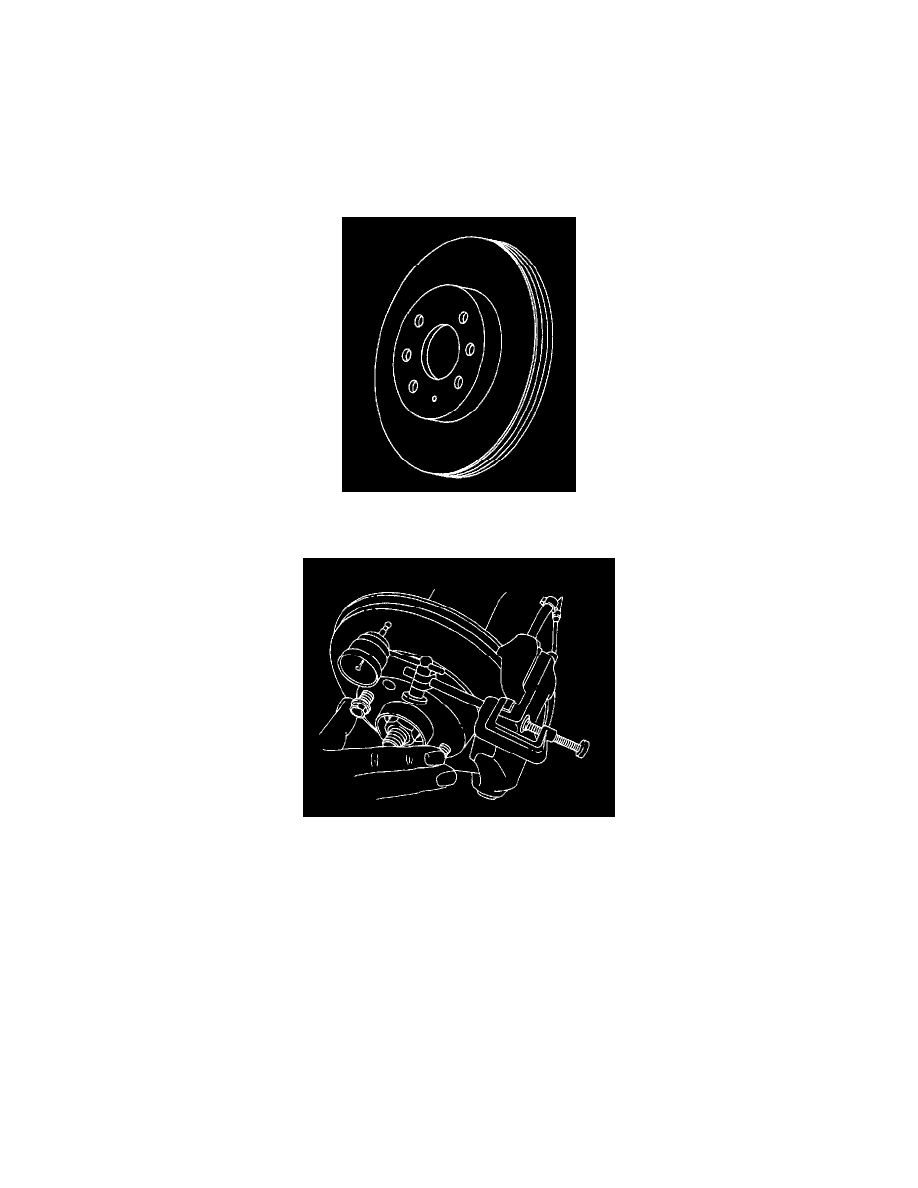Nubira SE Sedan L4-2.0L DOHC D-TEC MFI (2001)

Brake Rotor/Disc: Testing and Inspection
Front
ROTOR INSPECTION
Thickness variation can be checked by measuring the thickness of the rotor at four or more points around the circumference of the rotor. All
measurements must be made at the same distance in from the edge of the rotor.
A rotor that varies by more than 0.005 mm (0.0005 inch) can cause pedal pulsations and/or front end vibration during brake applications. A rotor that
does not meet these specifications should be refinished to specifications or replaced.
During manufacturing, the brake rotor and the tolerances of the braking surface regarding flatness, thickness variation, and lateral runout are held very
close. The maintenance of close tolerances on the shape of the braking surfaces is necessary to prevent brake roughness.
In addition to these tolerances, the surface finish must be held to a specified range. The control of the braking surface finish is necessary to avoid pulls
and erratic performance and to extend lining life.
Using a commercially available dial indicator, check lateral runout as follows:
Notice: Permissible lateral runout is a maximum 0.03 mm (0.0012 inch). If lateral runout exceeds the specification, ensure that there is no dirt
between the rotor and the hub and that contact surfaces are smooth and free from burrs.
1. Position the transaxle in NEUTRAL.
2. Remove the rotor.
3. Fasten the brake rotor to the wheel hub with two wheel bolts.
4. Fasten a dial indicator to the brake caliper.
5. Set the gauge probe tip to approximately 10 mm (0.39 inch) from the outer edge of the brake rotor, perpendicular to the disc and under slight
preload.
6. Remove the dial indicator and the wheel bolts connecting the rotor to the hub.
Important: Since accurate control of the rotor tolerances is necessary for proper performance of the disc brakes, refinishing of the rotor should be
done only with precision equipment.
7. Refinish the rotor, if required, with precision equipment. Discard the rotor if it fails to meet the above specifications after refinishing.
8. Install the rotor.
